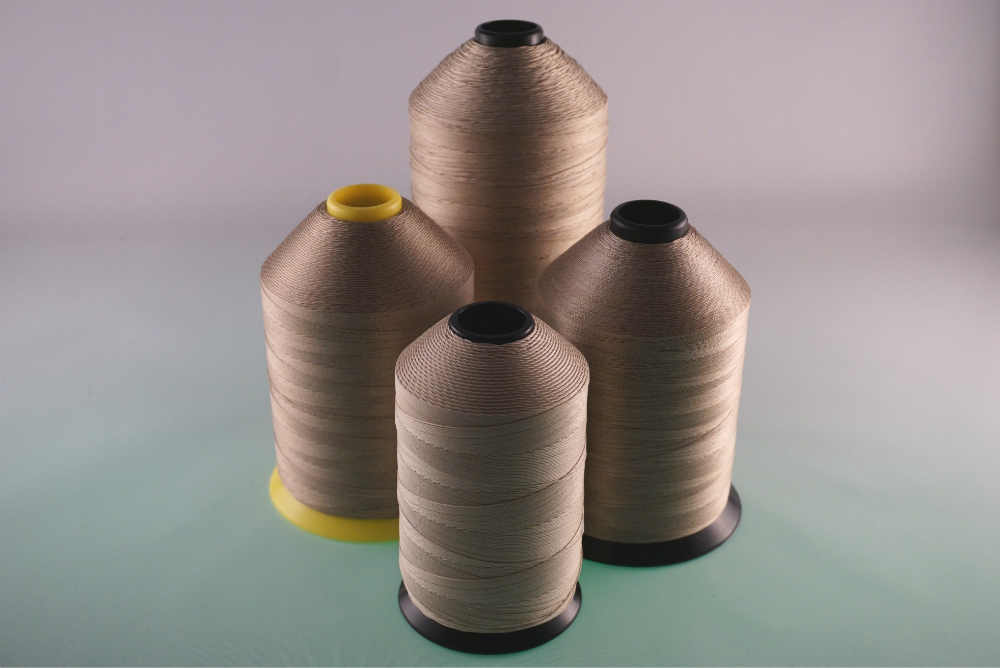PTFE Coated fiberglass fabrics, tapes and belts are typically a tan color. Within the industry, we call this color “Natural”. But if you’ve ever worked with fiberglass fabric (maybe to repair your car or boat), it looks white. And of course it is white until it sees heat, then it turns “tan” or “natural”. Read on if you’d like to find out why!
Fiberglass yarns are made up of very fine filaments of glass fiber. These filaments are amazing little things, but they are, after all, glass and are subject to damage or breakage like any glass product would be.
Imagine very fine fiberglass rods; they’d easily snap and break if not handled very carefully. In order to make fiberglass filaments more durable, a starch “binder” is applied to the filaments to protect them in further handling, braiding, twisting, weaving, etc. These binders are organic… in some cases they are potato starch!
These binders caramelize when they see heat, very similar to a piece of toast turning brown in your toaster! Of course, PTFE coating of fabrics, tapes and belts requires relatively high temperatures to cure the PTFE. That tan color from the binders being heated is then trapped within a translucent PTFE coating, thus making the final product “tan” in color. We call it “natural” because it is what naturally happens to these binders. You may see slight variations in the tan/natural color of the product because different binders are used on different yarns.
OK, but why are some black in color? That’s because we sometimes add pigment to the PTFE dispersion to achieve different colors or characteristics. Black is often used for several reasons. First and foremost, it is used to pigment belts in ultraviolet curing ovens (most often in the screen printing industry). When under UV lights, the starch binders that make a fabric or belt “tan” will bleach out, turning your tan belt a funny shade of off-white.
Although this in no way impacts the performance of the belt, it is often perceived as a failure. In order to hide that change, we make the belts black. That same black color can mask other things like wicking oils in food processing, ink from screen printers, etc. In some rare cases, specialized pigments (mostly black) are used to try to impart a degree of conductivity to this incredible insulator. In most cases, the point is to create a path to discharge static electricity.
What about other colors? Sure, they can be done but really are very specific to certain industries and not typically an issue in most commercial applications.
Yarns for electrical insulation are an entirely different beast, Yes, we manufacture those as well, but they are another topic entirely!
Again, and as always, contact us with any questions or comments. We’re here to help!

